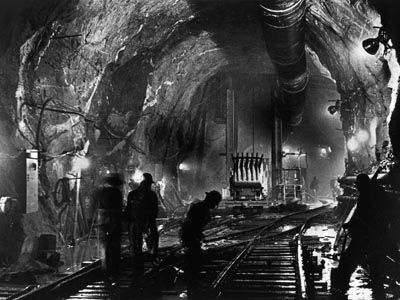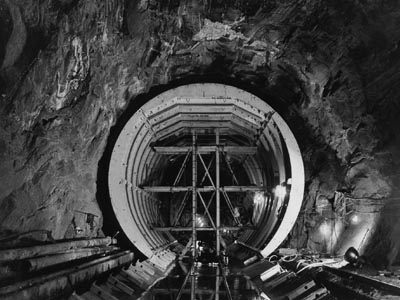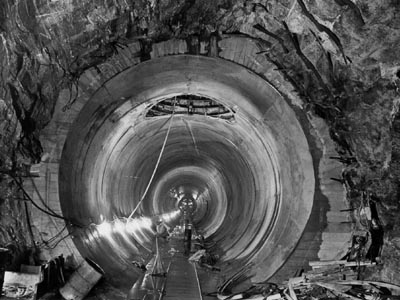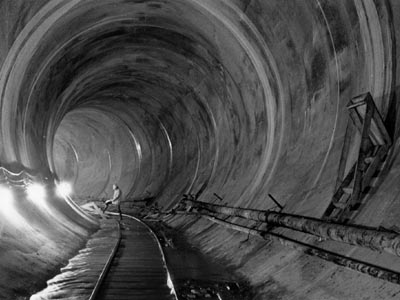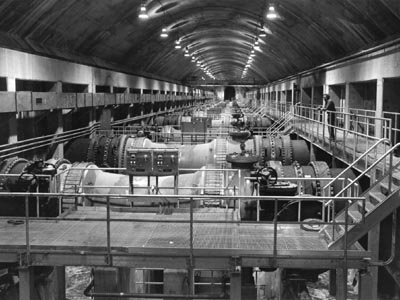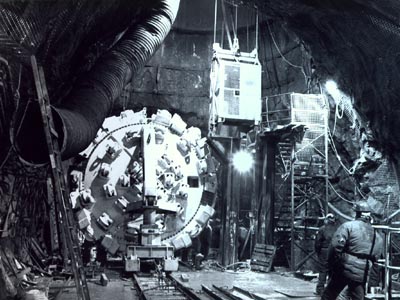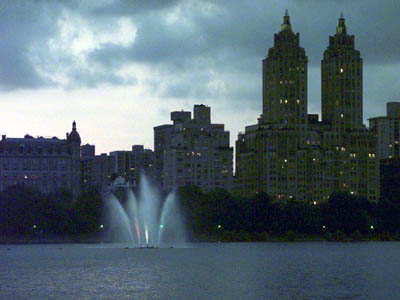A Tunnel 60 Miles Long
New York City Water Tunnel Number 3Water, water, everywhere, Atlantic and Pacific. But New York City's got them beat, - Edward Koch
Photo by Peter Essick, Aurora, wpni01.auroraquanta.com 1999 Grand Award - Water ResourcesYou and 9 million of your New York neighbours need up to one and a half billion gallons of water per day. Two enormous tunnels deliver it to you, but demand is so high that the city has not been able to clean them since they were built during the Great Depression. What do you do? Lucky for you, engineers at Malcolm Pirnie, Incorporated of White Plains, New York, developed a solution you can drink to - they designed a third tunnel that is being dug 800 feet below the Big Apple. They fit the funnel with a one-of-a-kind, expandable valve system that allows it to be expanded during three independent phases of construction without interrupting the continuous service needed to keep the city’s water flowing at its usual pace. City Tunnel Number 3 is the largest capital construction project in the history of New York City. The activated portion of the tunnel runs 13 miles, from the Hillview reservoir in Yonkers across Central Park and under the East River and Roosevelt Island into Astoria, Queens. The tunnel will eventually span more than 60 miles, bringing water from the Catskills. It will cost more than $5 billion. (People in the United States use up to three times as much water as the people in Europe.) Engineers overcame enormous safety hazards in the construction of the tunnel, and developed unique protocols for robot and manned inspection in the massive, constructed shafts. They used directional drilling and provided the city’s first automated chlorine residual metering system to increase the safety of the water through automatic monitoring and disinfectant dosage systems. Source: American Council of Engineering Companies
Excavation of Stage 1 of City Water Tunnel Number 3 looked like this in 1972.
Workers take and mark measurements in Stage 1 of the tunnel
An arch is constructed to prepare the tunnel to be lined with concrete.
Taken in 1978, this photograph illustrates the full-circle concreting method
This finished section of the tunnel, which is 24 feet in diameter, is under Shaft 13B,
Construction in a flow control or valve chamber looked like this in August 1983
The valve chamber in Van Cortlandt Park was completed in 1990
The Tunnel Boring Machine (TBM) was lowered in sections and assembled on the tunnel floor. Mayor Giuliani and Commissioner Miele activate the fountain in Jacqueline Kennedy Onassis Reservoir on 13 August 13 1998, inaugurating City Water Tunnel Number 3. Mayor Giuliani presents the Sandhogs with a ceremonial plaque bearing the names of the 24 people who lost their lives in construction-related accidents. A permanent bronze plaque will be mounted outside the Central Park Reservoir’s South Gatehouse.
The illuminated fountain in the Reservoir in Central Park Source: www.nyc.gov
For pages on natural disasters - including lightning strikes, volcanoes, floods, global warming and more - as well as satellite and
castle photos and some great pictures of trees, clicking the "Up" button below takes you to the Table of Contents page for this
Environment section. |
 Animals
Animals Animation
Animation Art of Playing Cards
Art of Playing Cards Drugs
Drugs Education
Education Environment
Environment Flying
Flying History
History Humour
Humour Immigration
Immigration Info/Tech
Info/Tech Intellectual/Entertaining
Intellectual/Entertaining Lifestyles
Lifestyles Men
Men Money/Politics/Law
Money/Politics/Law New Jersey
New Jersey Odds and Oddities
Odds and Oddities Older & Under
Older & Under Photography
Photography Prisons
Prisons Relationships
Relationships Science
Science Social/Cultural
Social/Cultural Terrorism
Terrorism Wellington
Wellington Working
Working Zero Return Investment
Zero Return Investment
